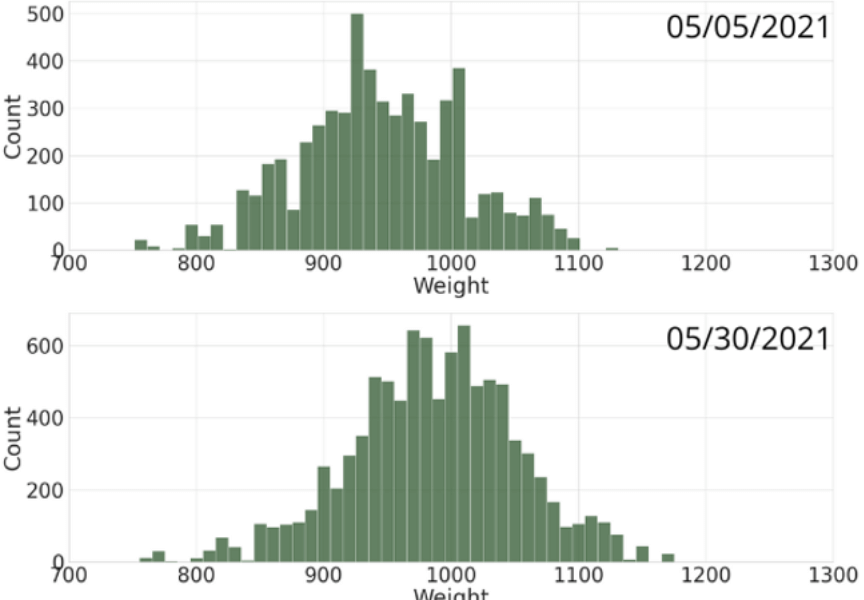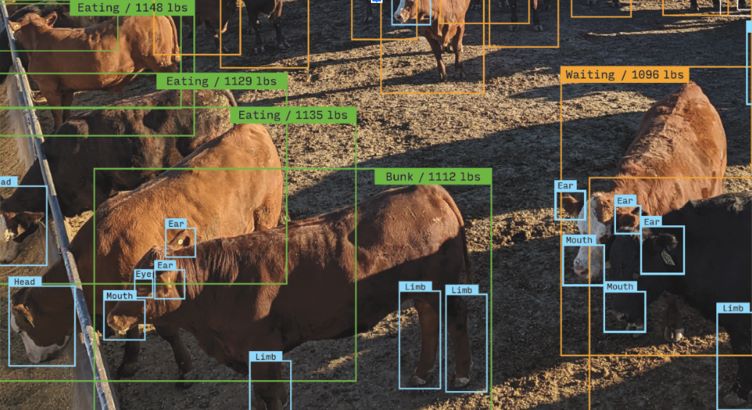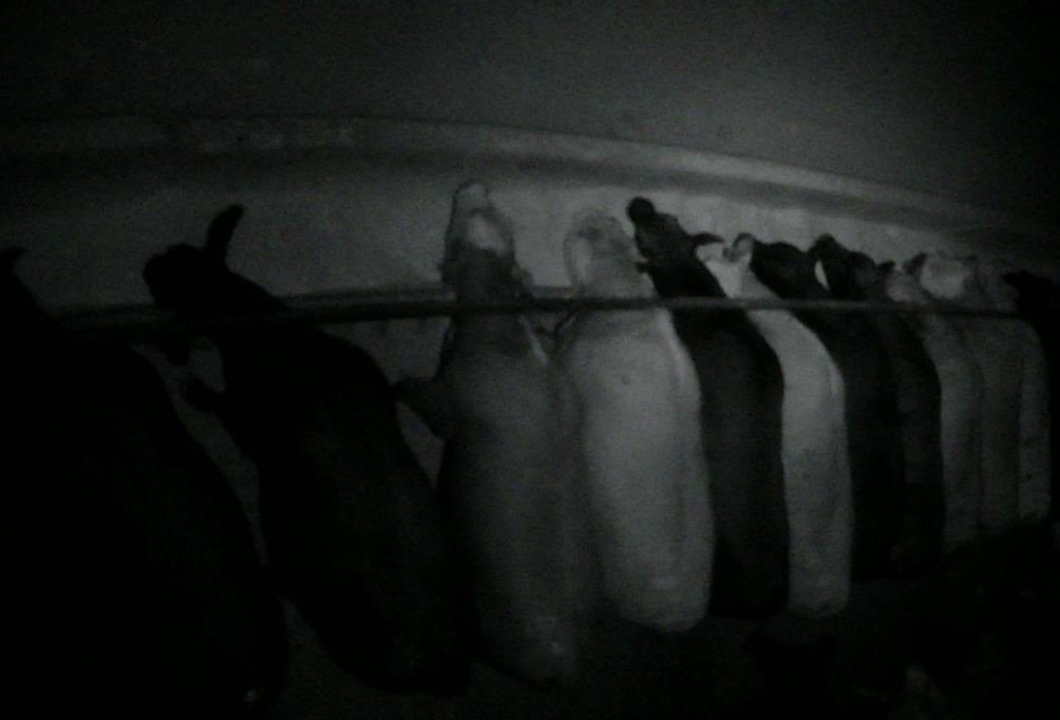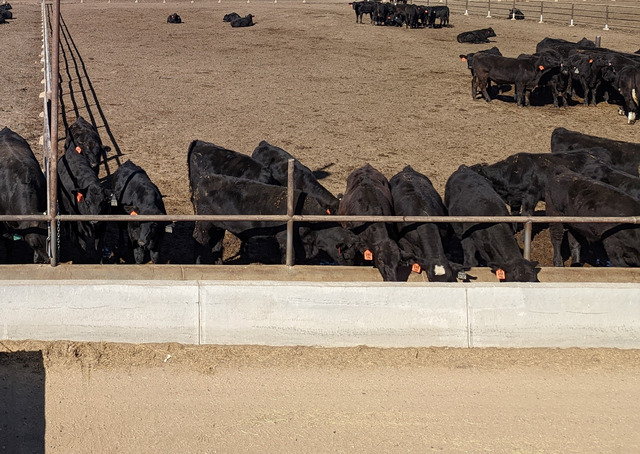With the soaring prices of feed, it is more crucial than ever that your animal’s intake be optimized. Overfeeding and penalties for “heavies” aren’t only issues at the processing plant. Feeding cattle to the point that more energy is going to maintenance than gain results in wasted feed and lost profit. Likewise, underweight animals cost money too. Weighing cattle on scales is expensive and disruptive, and new technologies offer better ways to pinpoint outliers and predict the optimal time to harvest a pen.
Weight matters
Per the latest USDA report, the average live weight of steers at processing was 1,386 lbs. This falls well within the bounds of the modern industry finishing weight average (which can range from approximately 1,200 to 1,400 lbs.)
As with much in the cattle world, consistency and uniformity are rewarded. But cattle that are excessively heavy or light can skew a group and have issues smoothly moving through the initial processing equipment, such as the rail. Financially, cattle that are weeks different from their optimal harvest timing will also grade differently.
Some large feedlots sort large pens of cattle down into smaller lots to optimize endpoints, but most feeders ship entire pens. Typically weights are estimated by calculating the average daily gain based on feed delivered to the pen but without any information on the spread of the weights that comprise the average. Often it’s left to a human to eyeball the cattle and make that determination – not an easy task when a pen has well over a hundred head.
Artificial intelligence (AI) coupled with “machine vision” can help prevent these common headaches and ensure you drive consistency and optimize the harvest timing of every pen.

Machine vision or the human eye?
It is a fact of life that everything has a certain margin of error. However, a machine’s margin of error can be monitored and corrected for consistency. Human error is widely variable, based on who is making the judgment, their experience, their personal opinions and even external influences.
To get the weight of a pen of cattle on a scale takes time, manpower, increases animal stress, and knocks them off their feed. As a result, the cost of weighing cattle, even if it helps optimize harvest timing, can overwhelm the benefits.
Consider also the thief that time is to the feedlot. It takes weeks to add weight to a thin or otherwise underperforming animal. For heavies, in a feedlot environment, controlling intake to decrease excessive fat is virtually impossible in a pen of mixed cattle. At the end of the day, the harvest decision requires compromises, but it doesn’t have to be done wearing a blindfold.
So what is a viable solution? Continuous in-pen monitoring.
There was a time when this was impossible. But, thanks to machine vision and data analytics, the Precision Livestock system is able to do this.
Our solution
By using “machine vision” – a camera system with advanced software that can identify each animal and its eating behaviors – our system can analyze pen weight distribution and identify the proportion of lights and heavies and how these proportions are changing over time.
This way, a manager can make an informed decision about what action to take to optimize the pen – whether that means knowing the actual optimal time to ship a pen of cattle, do a “top sort”, sort multiple pens of cattle together, or sell a pen of cattle on a grid with the optimal pricing structure for the pen.
Having this information can blend seamlessly into already established protocols for handling these outlying animals. Or, if you don’t have ones in place, you and your team can establish them based on the information you receive.
With the rising costs of feed, it is more important than ever for feeders to have a system in place to identify outliers and adjust their strategies to ensure optimal productivity.
To discover how the PLT Bunk Management System can help you get the most from your team and your data after dark, shoot us an email at info@precision-livestock.com.




